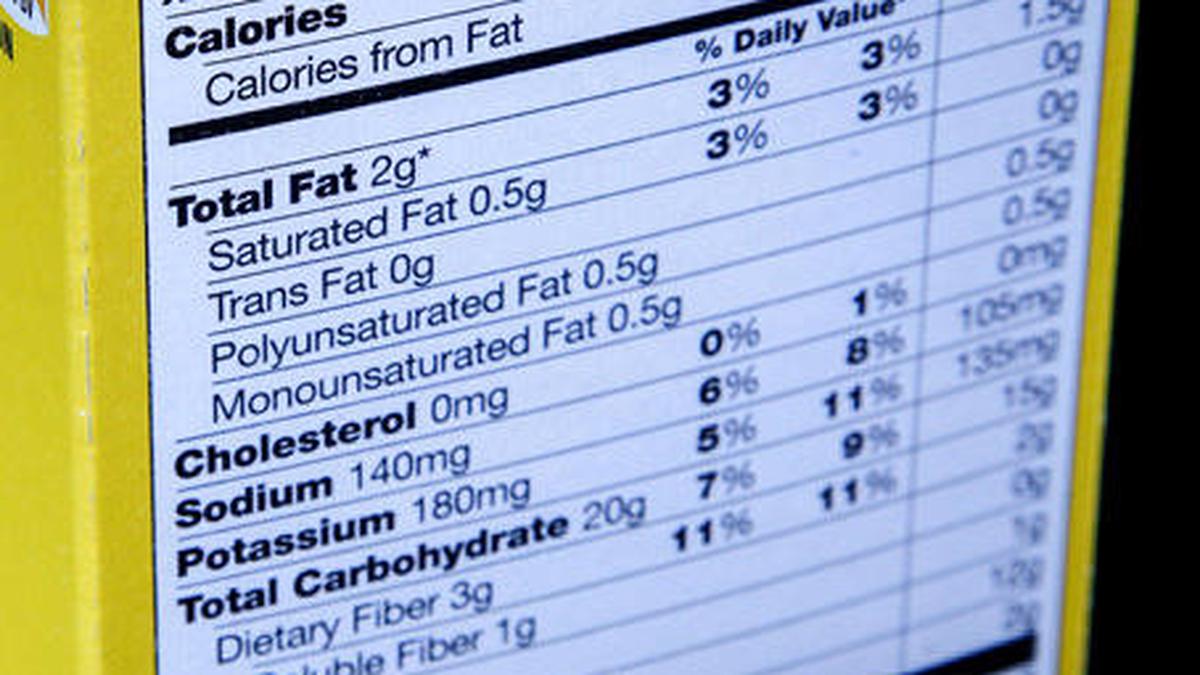FSSAI considers symbol-based nutrition labels for food items.

People who know about the situation say that India’s food regulator may put labels on the front of packages that tell consumers what the food is made of and how healthy it is.
The Food Safety and Standards Authority of India (FSSAI) may require that all packaged foods have a label on the front that shows how much energy, saturated fat, total sugar, sodium, and essential nutrients the food has per 100 gm or 100 ml. This label will be made up of symbols that are easy to understand.
A high-level official who asked to remain anonymous said, “There are a number of plans to change the way food is regulated, and this is one of them.”
The food regulator started talking about this last year, and they also came up with the idea of giving packaged foods on the market an Indian Nutrition Rating based on how healthy they are overall.
“On September 13, 2022, FSSAI published a draught of the FSS (Labelling and Display) Amendment Regulations 2022. The Indian Nutrition Rating has been suggested as a way to label food on the front of the package so that people can make better food choices. The same thing could be changed until November 18, 2022. “The comments we got are being looked at,” the regulator said in response to a question about the issue.
The official said that putting nutritional information on the front of the package has already been done in some Western countries in different ways, and it has helped consumers make better decisions.
The National Institute of Nutrition (NIN), which is part of the Indian Council of Medical Research and is based in Hyderabad, recently released the results of a study it did on how different nutrition labels are accepted and how they could be used to help people make better food choices.
In a statement about the results of its study, NIN said, “The study suggests that warning labels can stop people from choosing and eating even moderately unhealthy foods, while summary ratings like health star or NutriScore can help find healthier options among the available foods.”
“Summary labels give a quick look at the product’s most important features and benefits. They often include information about both good and bad nutrients,” it said. “Warning labels, on the other hand, tell you about possible risks associated with the product because they take into account nutrients like sugars, fats, and salt that are of concern.”
This was a cross-sectional study with 3231 people (2,616 adults and 615 teenagers) from five parts of India: the north (Delhi), the east (Kolkata), the west (Pune), the south (Hyderabad), and the northeast (Nagaland) (Jorhat, Assam).
“In this study, it was found that only a small number of participants read the nutrition information. However, a higher number of participants looked at the veg/non-veg symbols and quality symbols,” said the study’s researchers. “Because they are based on symbols, FOPNL (front of the pack nutrition labels) on pre-packaged processed foods are likely to be well used by the people of India.”
Nutritional labels are seen as important ways to get the word out about how healthy food is to the public. In different countries around the world, these labels are used in different ways, either by choice or by law.
“The type of FOPNL that should be used in a country should be decided based on local research, regional and global evidence, and each country’s specific goals for making a FOPNL policy,” NIN said.
In Europe and Australia, the formats that are popular right now are Nutri-score and Health Star Rating, and the rating is based on both good and bad nutrients. For example, green means healthy, orange means moderately healthy, and red means unhealthy.
“The NIN director, Dr. Hemalatha R, said that the FOPNL format should be chosen for India not just because it is more widely accepted and appealing, but also because it can change people’s food choices. “The main reason for making the FOPNL is also what made us choose the format. If the goal of FOPNL is to encourage people to choose healthy foods, then summary labels might be helpful.”
“Alternatively, warning indicator labels could be helpful in a world where overweight, obesity, and noncommunicable diseases are on the rise,” she said. “If the FOPNL is to be used as a preventive tool and to keep people from eating nutrients of concern, then warning indicator labels could be useful.”



